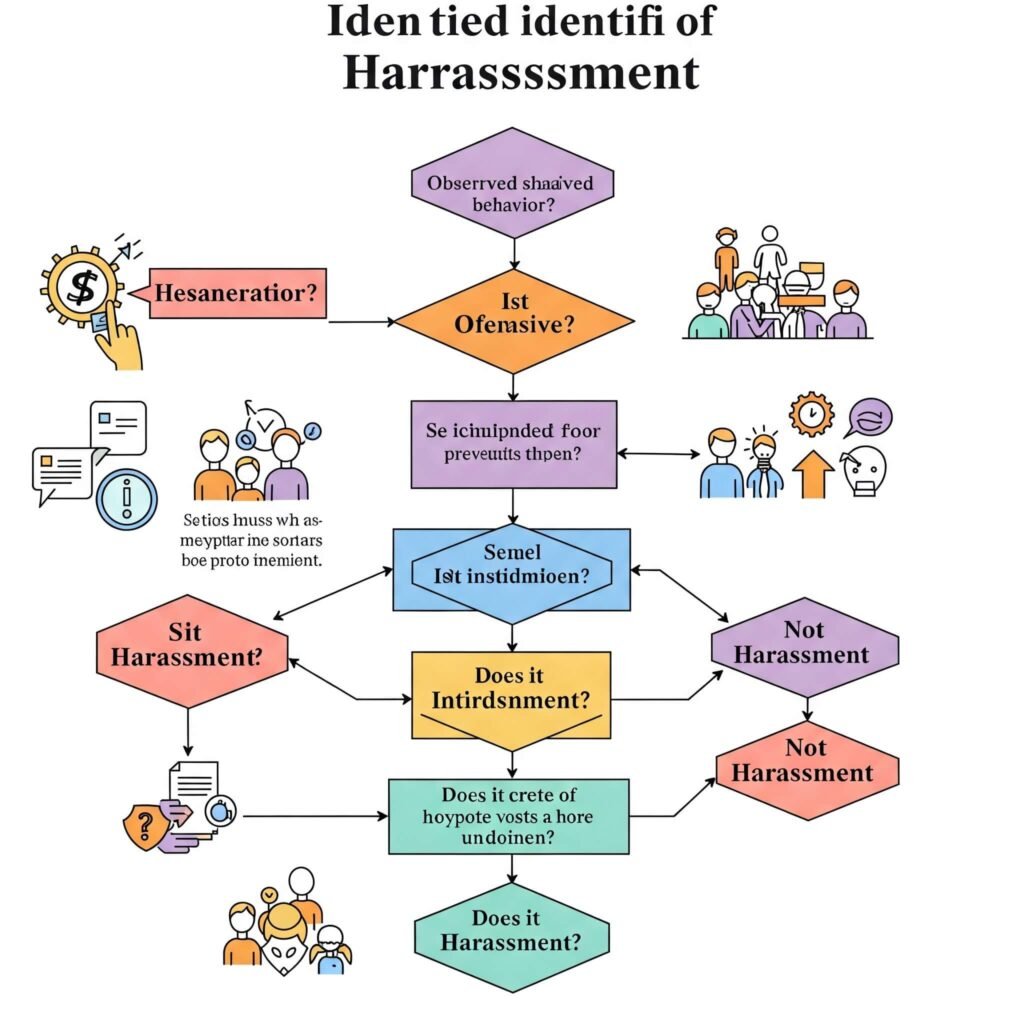Harassment is a pervasive issue that can disrupt lives, workplaces, and communities. Consequently, understanding what counts as harassment and knowing how to report it empowers individuals to take action and seek justice. This SEO-optimized guide, therefore, breaks down the types of harassment, provides real-world examples, and offers actionable steps to report it effectively, ensuring you’re equipped to handle such situations confidently.
Understanding What Counts as Harassment
To begin with, harassment involves unwanted behavior that creates a hostile, intimidating, or offensive environment. For instance, it can occur in various settings—workplaces, schools, online platforms, or public spaces. Moreover, harassment often violates anti-discrimination laws, such as those enforced by the U.S. Equal Employment Opportunity Commission (EEOC).
Types of Harassment
In particular, harassment manifests in multiple forms, each with distinct characteristics:
- Workplace Harassment: This includes unwelcome comments, gestures, or actions based on protected characteristics like race, gender, or religion. For example, a manager repeatedly making inappropriate remarks about an employee’s appearance.
- Online Harassment: This encompasses cyberbullying, doxxing, or sending threatening messages via social media. For instance, receiving persistent, abusive comments on X targeting your identity.
- Sexual Harassment: This involves unwanted advances, inappropriate touching, or explicit remarks. As an example, a coworker sending unsolicited explicit messages.
- Verbal Harassment: This includes name-calling, slurs, or derogatory remarks. For example, a classmate mocking someone’s disability.
- Physical Harassment: This involves unwanted physical contact, like shoving or blocking someone’s path. For instance, a stranger intimidatingly following someone in a public space.

Why Recognizing Harassment Matters
Furthermore, identifying what counts as harassment is the first step toward addressing it. In fact, unreported harassment can escalate, leading to emotional distress, reduced productivity, or even physical harm. According to a Pew Research Center study, 41% of Americans have experienced online harassment, thus highlighting the need for awareness.
Real-World Impact
To illustrate, harassment has significant consequences:
- Emotional Toll: Victims may experience anxiety, depression, or low self-esteem.
- Professional Consequences: Workplace harassment can lead to job loss or stalled career growth.
- Social Isolation: Persistent bullying may cause victims to withdraw from communities.

How to Identify Harassment in Your Environment
Importantly, not all negative interactions qualify as harassment. Therefore, to determine if an incident counts as harassment, consider these factors:
- Repetition: Is the behavior persistent or a one-time event? Repeated actions often indicate harassment.
- Intent: Does the behavior aim to intimidate, degrade, or offend?
- Impact: Does it create a hostile environment or interfere with your well-being?
- Context: Does the behavior target a protected characteristic, like race or gender?
Examples of Harassment vs. Non-Harassment
For clarity:
- Harassment: A coworker repeatedly makes racist jokes about your heritage, ignoring your requests to stop.
- Non-Harassment: A colleague critiques your work performance constructively during a review.

How to Report Harassment Effectively
Once you’ve identified what counts as harassment, reporting it promptly is crucial. Accordingly, follow these steps to ensure your report is taken seriously:
- Document Everything: Record dates, times, locations, and details of incidents. Additionally, save emails, messages, or screenshots as evidence. 2.; Review Policies: Check your workplace, school, or platform’s harassment policies. For instance, X has a reporting system for abusive behavior.
- Report to the Right Authority:
- Workplace: Inform HR or a supervisor. Specifically, reference company policies or laws like Title VII.
- Online: Use platform reporting tools or contact law enforcement for severe cases like threats.
- School: Notify teachers, counselors, or administrators.
- Seek Support: Consult trusted friends, family, or legal professionals. Notably, organizations like RAINN offer resources for sexual harassment victims.
- Follow Up: Ensure your report is addressed and escalate if necessary.
Tips for a Strong Report
To strengthen your report:
- Be specific about the behavior and its impact.
- Provide evidence, such as screenshots or witness statements.
- Remain professional, even if emotions run high.
Legal Protections Against Harassment
Additionally, many countries have laws protecting against harassment. For example, in the U.S., the EEOC enforces laws like Title VII, which prohibits workplace discrimination and harassment. Similarly, the U.K.’s Equality Act 2010 safeguards against harassment in various settings.
When to Seek Legal Help
If internal reporting fails or the harassment escalates, consult a lawyer specializing in harassment or discrimination. They can, therefore, help you file a formal complaint or lawsuit.
Featured Image Placeholder: A high-resolution featured image showing a confident person standing up against a blurred crowd, symbolizing empowerment and action against harassment. Use bold colors (red, white, black) to convey strength and determination.
Key Takeaways
In summary:
- Know What Counts as Harassment: Recognize the types—workplace, online, sexual, verbal, or physical.
- Document and Report: Keep detailed records and follow proper reporting procedures.
- Seek Support: Use resources like HR, platform tools, or organizations like RAINN.
- Understand Your Rights: Familiarize yourself with legal protections in your region.
Outbound links:


































